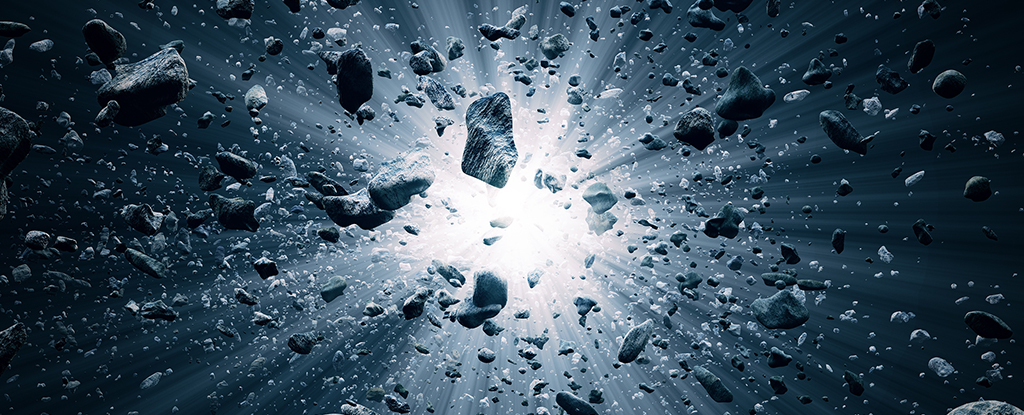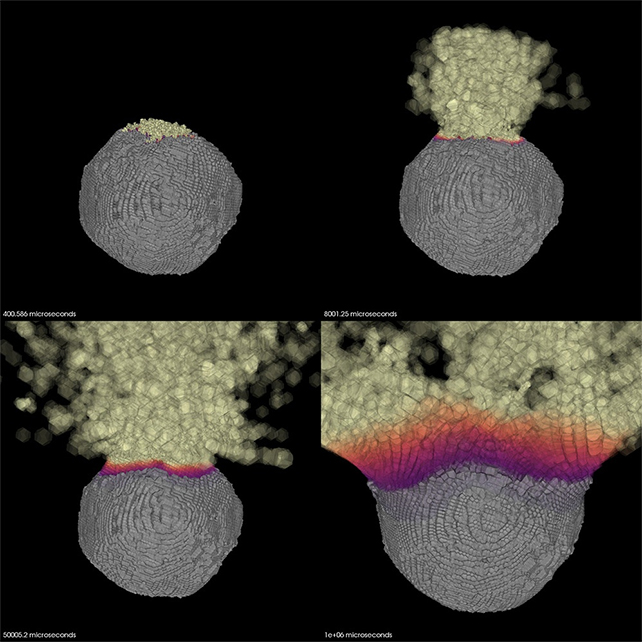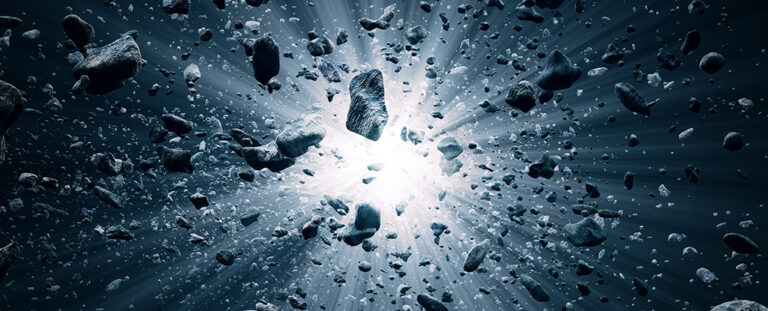Researchers Unveil the Effects of a Nuclear Explosion on an Asteroid
Although a popular theme in disaster movies, the real-world notion of using nuclear weapons against an incoming asteroid has been widely discredited.While a nuclear bomb might be capable of obliterating a smaller asteroid, deploying it against a larger one would merely result in fragmentation.
These fragments could still pose a threat to our planet, potentially exacerbating the situation by causing multiple impacts across the globe.

But is utilizing nuclear weapons against an incoming asteroid truly an imprudent approach? When employing the correct methodology, a nuclear explosion could potentially serve as a means to deflect an asteroid.Scientists at Lawrence Livermore National Laboratory (LLNL) have developed a modeling tool capable of simulating the potential outcomes if a nuclear device were detonated above an asteroid’s surface.
This tool aids in enhancing the comprehension of how the radiation emitted from a nuclear blast interacts with the asteroid’s surface, while also examining the shockwave dynamics that may impact the asteroid’s interior.
The explosive technique, known as nuclear ablation, entails the radiation from the blast vaporizing a portion of the asteroid’s surface, generating an explosive thrust and inducing a change in velocity as a response.

The model is capable of accommodating a diverse array of initial conditions, replicating various types of asteroids observed up close, ranging from solid rocks to rubble piles. These simulations are providing planetary scientists with additional insights and potential strategies for situations where an asteroid could pose a threat to Earth.”If we have sufficient advance notice, we could potentially dispatch a nuclear device, sending it millions of miles to an asteroid on a collision course with Earth,” stated LLNL researcher Mary Burkey. “
Upon detonation, we could either deflect the asteroid, maintaining its integrity while providing a controlled push away from Earth, or we could disrupt the asteroid, fragmenting it into small, fast-moving pieces that would veer clear of the planet.”Thanks to the insights gained from the Double Asteroid Redirection Test (DART) mission, where a kinetic impactor was deliberately crashed into an asteroid to alter its trajectory, scientists have gained valuable knowledge about redirecting hazardous asteroids.
The new model, named the X-ray energy deposition model, allows researchers to build upon the lessons from DART and explore how nuclear ablation could be a feasible alternative to kinetic impact missions.Burkey highlighted the exceptional energy density per unit of mass of nuclear devices, emphasizing their potential as a valuable tool in mitigating asteroid threats. However, the team acknowledges that predicting the effectiveness of a nuclear deflection or disruption mission relies on accurate multiphysics simulations of the device’s X-ray energy deposition into the asteroid and the ensuing material ablation.The researchers set the goal of developing an efficient and accurate method for modeling nuclear deflection, taking into account various physical properties of an asteroid.
Burkey explained that their high-fidelity simulations can track photons penetrating asteroid-like materials, such as rock, iron, and ice, while considering complex processes like reradiation.The model considers a broad spectrum of asteroid compositions, making it applicable to a wide range of potential scenarios. In the event of a planetary defense emergency, Megan Bruck Syal, LLNL’s planetary defense project lead, emphasized the critical role of high-fidelity simulation modeling in providing decision-makers with actionable, risk-informed information to prevent asteroid impacts, safeguard vital infrastructure, and save lives.”While the likelihood of a large asteroid impact during our lifetime is low, the potential consequences could be devastating,” Bruck Syal noted.
This article is republished from UNIVERSETODAY under a Creative Commons license. Read the original article.
Do not forget to share your opinion with us to provide you with the best posts !




0 Comments